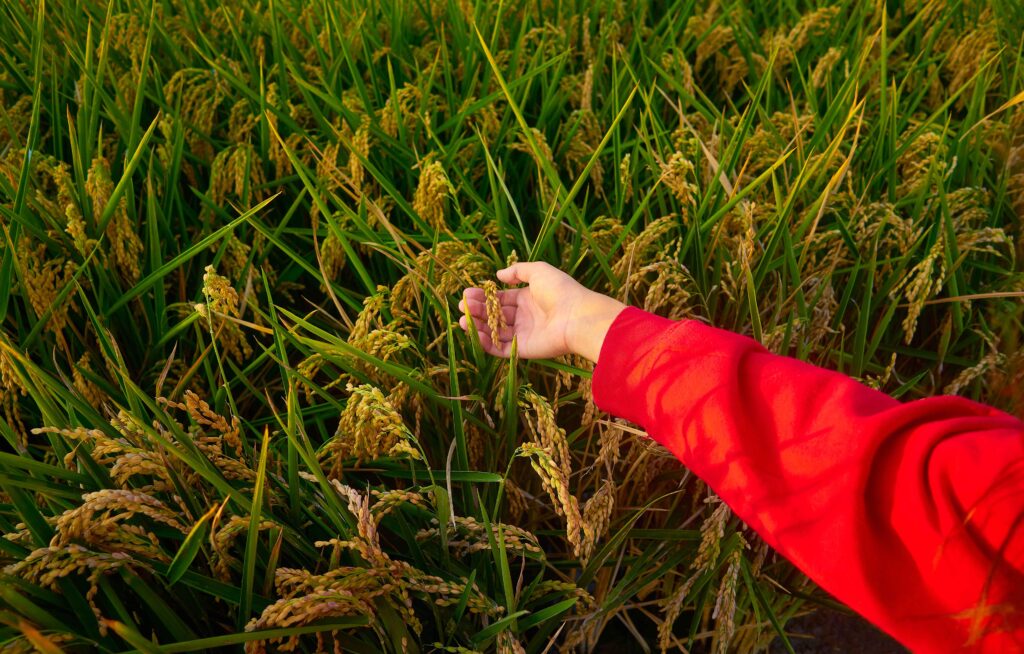In an era where climate change, unpredictable weather patterns, and fluctuating market prices are constant threats to agricultural productivity, crop insurance has become a vital tool for farmers worldwide. Whether you’re a smallholder or a large-scale producer, crop insurance offers protection against the unpredictable risks that can devastate harvests and threaten the livelihoods of millions. This blog delves into the details of crop insurance, its importance, how it works, the different types available, and why it’s essential for farmers to secure their financial future.
What Is Crop Insurance?
Crop insurance is a financial product that provides protection against the loss of crops due to natural disasters or unforeseen events, such as drought, flooding, hail, or disease. It helps farmers minimize their financial risks by compensating for their losses when crops fail or yield less than expected. In many countries, crop insurance is also subsidized by the government, making it an essential part of the agricultural safety net.
Farmers face many uncertainties. From unpredictable weather to pest outbreaks, the risk of crop failure is ever-present. Crop insurance is designed to reduce these risks by offering financial support, allowing farmers to recover and continue farming even after a disaster.
The Importance of Crop Insurance
1. Protection Against Natural Disasters
Natural disasters, such as hurricanes, droughts, floods, and hailstorms, can wipe out entire harvests. For many farmers, a bad season could mean financial ruin. Crop insurance helps mitigate these losses, providing farmers with much-needed compensation to recover and prepare for the next planting season.
2. Stabilizing Farm Income
Income stability is crucial for farmers to make long-term decisions about planting, investment in technology, and farm maintenance. Crop insurance ensures that farmers can withstand financial challenges brought about by crop failures. With guaranteed payments in case of loss, farmers can continue to operate their businesses without significant disruptions.
3. Facilitating Access to Credit
Banks and other financial institutions are often hesitant to lend money to farmers without collateral. However, crop insurance can serve as a safety net, assuring lenders that farmers will be able to repay loans, even if they face crop failures. This increases access to credit, which is essential for investment in modern farming equipment and expansion.
4. Promoting Food Security
The stability of agricultural production is critical to food security. By reducing the economic impact of crop loss, crop insurance helps ensure a continuous supply of food, both locally and globally. This is especially important in regions heavily reliant on agriculture for sustenance and economic development.
5. Encouraging Sustainable Agricultural Practices
Many crop insurance policies incentivize farmers to adopt sustainable practices that reduce environmental impact. For example, certain policies may reward farmers who implement conservation tillage or maintain soil health, thus aligning insurance with long-term environmental goals.
How Does Crop Insurance Work?
Crop insurance operates by providing farmers with compensation when their crops fail or underperform due to covered events. Farmers pay premiums to purchase insurance coverage, and if their crops experience a covered loss, the insurance company pays out a claim based on the severity of the loss.
Here’s a simplified process of how crop insurance works:
- Choosing Coverage: Farmers choose a policy based on the type of crops they grow, the level of coverage they require, and the risks they wish to mitigate (e.g., hail, drought, etc.).
- Paying Premiums: The farmer pays premiums to the insurance company. In some cases, government subsidies may help cover part of the premium cost.
- Reporting Data: Farmers report crop yields and other relevant data to their insurance provider to ensure accurate coverage.
- Triggering a Claim: If an insured event occurs (e.g., a drought or pest infestation) that reduces the crop yield, the farmer can file a claim.
- Loss Assessment: An assessor evaluates the extent of the loss, and based on this assessment, the insurer pays out a compensation amount, typically calculated as a percentage of the lost yield or income.
- Payout: The farmer receives a payout, which helps cover the cost of the lost crops and allows them to stay financially viable.

Types of Crop Insurance
There are several types of crop insurance policies available, each catering to different needs and risks. The most common types include:
1. Revenue Protection (RP)
Revenue Protection is one of the most popular crop insurance options. It covers both yield losses and price declines. Under this policy, a farmer is compensated if either the crop yield is lower than expected or the market price for the crop drops below a certain level. This type of policy ensures that the farmer’s income remains stable, regardless of fluctuations in yield or market prices.
2. Yield Protection (YP)
Yield Protection provides coverage only for yield loss. If the farmer’s crop yield falls below the expected level due to events such as disease, pests, or weather-related issues, this policy will provide compensation. However, it does not cover price fluctuations in the market.
3. Multi-Peril Crop Insurance (MPCI)
Multi-Peril Crop Insurance offers protection against a wide range of risks, such as drought, hail, flooding, and disease. MPCI is the most comprehensive type of crop insurance available, offering protection against various perils that may affect the farm. This policy is designed to cover any situation where the crop yields are affected by natural disasters, regardless of the cause.
4. Crop-Hail Insurance
This policy focuses specifically on damage caused by hail. Hailstorms can devastate crops in a matter of minutes, and crop-hail insurance offers coverage for such events. Although this policy is more limited in scope, it can be an essential add-on for farmers in areas prone to hailstorms.
5. Farm Revenue Protection
Farm Revenue Protection provides coverage for the loss of revenue from a combination of yield loss and price loss. This policy also considers additional income streams like government payments and secondary crops, making it an ideal choice for diversified farms.
6. Pasture, Rangeland, and Forage (PRF) Insurance
This type of insurance covers loss of grazing land due to drought or other environmental events that negatively affect forage growth. This is especially important for livestock producers who rely on pasture and forage for animal feed.
Factors Affecting Crop Insurance Premiums
Several factors influence the cost of crop insurance premiums, including:
- Crop Type: Some crops are more prone to certain risks, such as drought or disease, which can affect premiums. High-risk crops often come with higher premiums.
- Location: Geographic factors, such as climate, soil quality, and weather patterns, play a significant role in determining premiums. Areas prone to frequent storms or droughts will have higher premiums.
- Coverage Level: The more comprehensive the coverage, the higher the premium. Farmers can choose from various coverage levels, from basic protection to full coverage that covers all types of risks.
- Historical Yields: A farm’s past performance also impacts the cost of crop insurance. Farms with a history of low yields may face higher premiums due to increased perceived risk.
- Government Subsidies: In many countries, governments offer subsidies to help farmers reduce the cost of premiums. These subsidies can vary based on policy type, location, and income levels.
How to Choose the Right Crop Insurance Policy
Selecting the right crop insurance policy depends on various factors, including the size of the farm, the types of crops grown, and the farmer’s risk tolerance. Here are some key steps to guide the decision-making process:
1. Assess Your Risks
Consider the specific risks that your farm faces. Are you in an area prone to drought or flooding? Do you grow crops that are vulnerable to pests or disease? Understanding these risks will help you choose the right type of coverage.
2. Understand Coverage Options
Take the time to understand the different types of crop insurance available and their coverage limits. While a more comprehensive policy might cost more, it could provide greater protection in the event of a disaster.
3. Evaluate the Costs
While crop insurance is an investment, the cost can vary widely depending on the coverage level and type of policy. Work with an agent to get quotes and compare policies to ensure that the cost fits within your budget.
4. Check for Government Subsidies
In many countries, government programs offer subsidies for crop insurance premiums, making it more affordable. Be sure to check whether you’re eligible for any subsidies or financial assistance.
5. Review Claims Process
Understanding how the claims process works is crucial. Make sure that the insurance company has a transparent, quick, and reliable process for filing and processing claims.
The Future of Crop Insurance
With climate change presenting new challenges for agriculture, crop insurance is likely to evolve. The increasing frequency of extreme weather events, changing pest patterns, and new risks call for innovative insurance solutions. The future of crop insurance will likely see the integration of technology, such as satellite data and AI-driven predictive models, to assess risk and streamline claims processes.
Moreover, governments and insurers may collaborate more closely to develop policies that better address emerging risks, ensuring that farmers remain protected in an ever-changing agricultural landscape.
Conclusion
Crop insurance is not just a safety net—it’s a critical investment in the future of agriculture. With the unpredictability of weather, pests, and disease, crop insurance offers farmers the financial protection they need to recover from disasters and continue farming. Whether you’re a seasoned agricultural producer or just starting out, understanding the different types of crop insurance, how they work, and the factors influencing premiums can help you make informed decisions and protect your farm from unexpected losses.
By offering financial stability, encouraging sustainable practices, and contributing to food security, crop insurance plays a vital role in ensuring that the global agricultural system remains resilient, productive, and sustainable for generations to come.








1 thought on “Weather-Index Insurance: A New Era of Crop Protection”